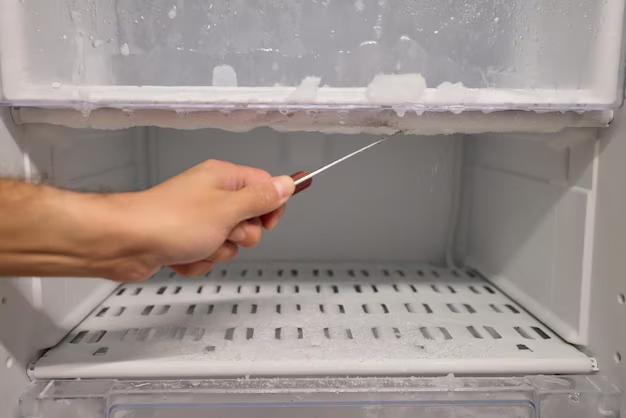Strategies to Effortlessly Remove Dents from Your Stainless Steel Refrigerator
Imagine walking into your kitchen and noticing an unattractive dent on your shiny stainless steel refrigerator. Stainless steel surfaces are renowned for their sleek appearance and durability, yet they are not immune to dents, which can occur from something as simple as a bump from a shopping cart or a misplaced elbow. Fortunately, addressing these minor imperfections is more manageable than you might think. In this guide, we'll explore proven methods to restore your appliance’s flawless surface without professional help.
Understanding Stainless Steel and Its Vulnerabilities
Why Stainless Steel Dents Occur: Stainless steel is popular for home appliances due to its durability and resistance to rust and corrosion. However, the same properties that make it strong also contribute to its susceptibility to dents and scratches. The metal, although sturdy, can yield slightly under pressure, causing dents.
Factors That Contribute to Dents:
- Accidental Impact: Grocery bags, cooking utensils, or kids playing nearby can accidentally ding your refrigerator.
- Transportation and Installation Mishaps: Sometimes, dents occur during delivery or moving the appliance into your home.
- Daily Usage: Repeated opening and closing of the doors, especially with force, can lead to dents over time.
👉 Quick Tip: Understanding why denting occurs can help in preventing future incidents. Always handle the appliance with care and consider using soft bumpers where collisions are frequent.
Methods to Remove Dents from Stainless Steel Refrigerators
1. Using Heat and Cold to Pop Out Dents
One commonly discussed method involves using heat and cold to manipulate metal’s natural properties.
Steps to Follow:
Hair Dryer and Compressed Air:
- Begin by cleaning the dent area to remove any grime or dust.
- Use a hairdryer to heat the area of the dent for about 30 seconds to a minute. The heat will cause the metal to expand.
- Quickly follow with a can of compressed air. Turn it upside down to spray cold carbon dioxide on the heated area.
- The rapid cooling should cause the metal to contract, potentially popping the dent out.
Boiling Water and Ice:
- Pour boiling water over the dent to heat it up.
- Quickly apply an ice pack on the area immediately after, promoting a swift contraction.
🔑 Key Takeaway: This technique works best for shallow, small-sized dents. It’s a simple, cost-effective method with tools you likely already have at home.
2. The Power of Suction
Suction methods are another effective way of dealing with minor dents, working similarly to a plunger.
Steps to Follow:
Dent Pullers:
- Available at most auto parts stores, dent pullers come with a suction cup mechanism.
- Secure the suction cup to the center of the dent.
- Carefully pull in the opposite direction of the dent to pop the metal back into place.
DIY Plunger Method:
- For refrigerators with larger dents, using a clean, wet plunger can also be effective.
- Press the plunger onto the dent firmly, then pull with a steady motion.
🚨 Note: Before you start, ensure that the surface around the dent is clean to improve suction’s effectiveness.
3. Tapping Out with Tools
For those comfortable with a bit of DIY, using gentle tapping techniques with tools can be quite effective.
Steps to Follow:
Rubber Mallet:
- Access the inside of the panel where possible.
- Use a rubber mallet to gently tap out the dent from the inside.
- If accessible, use a block of wood against the metal to distribute the force evenly and prevent further deformation.
Dent Repair Kits:
- Widely available, these kits typically include specialized tools designed for small appliance repairs.
- Follow the included instructions for optimal results.
💡 Suggestion: If not confident using tools, consider consulting a professional to avoid causing further damage.
Preventive Tips for Protecting Your Stainless Steel Appliances
Preventing dents is just as important as knowing how to fix them.
- Strategic Placement: Ensure your refrigerator is located away from high-traffic areas where accidental bumps are more likely.
- Use of Bumper Guards: Install bumper guards on corners or edges to absorb impact.
- Mindful Usage: Always open doors with care and avoid slamming them shut.
- Educate Your Household: Make family members aware of potential causes of dents and encourage gentle handling.
Additional Considerations and When to Call a Professional
Sometimes DIY methods might not fully address the issue, particularly with larger or more complex dents.
When to Seek Professional Help:
- Persistent Dents: If the dent remains after trying several methods, it could be beneficial to consult with an expert.
- Large or Deep Dents: Some situations might require professional tools and expertise.
- Risk of Damage: If you have concerns about damaging the appliance’s surface or finish, a professional assessment is safest.
👉 Summary Table
| Method | Best For | Tools Needed | Skill Level |
|---|---|---|---|
| Heat and Cold | Small, shallow dents | Hair dryer, compressed air, water | Easy |
| Suction | Minor to medium dents | Dent puller, plunger | Moderate |
| Tapping with Tools | Larger dents | Rubber mallet, wood block | Intermediate |
| Professional Help | Complex, persistent dents | Professional services | Expert recommended |
Bringing It All Together
Dents on a stainless steel refrigerator can be an eyesore, but with a little creativity and the right technique, returning your appliance to its former glory is entirely possible. Whether it’s through heating, suction, or handy tools, several methods can effectively remove dents without needing professional interventions.
By incorporating prevention strategies into your daily routine, you can also keep these appliances looking pristine for years to come. Remember, the key to a long-lasting, visually appealing kitchen centerpiece is a balance of prompt care and thoughtful prevention. Now you’re equipped to handle any future mishaps confidently and efficiently.
